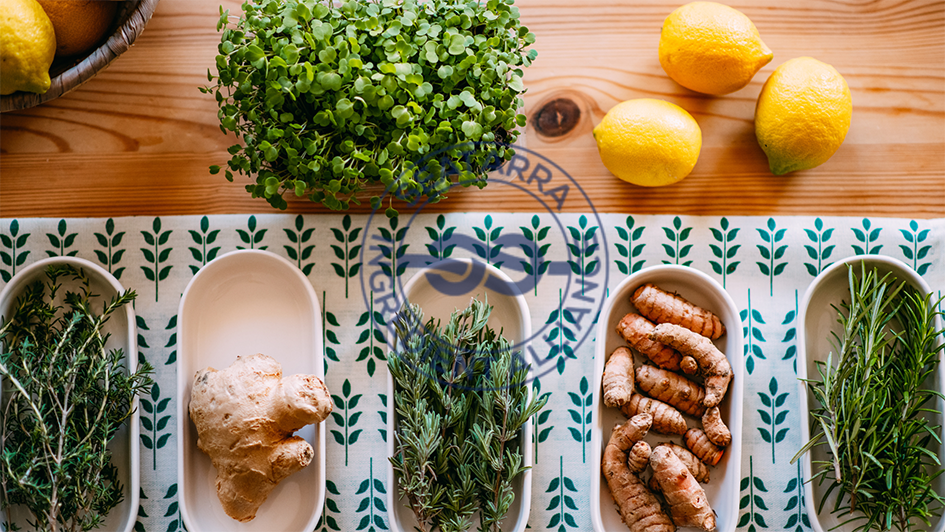
The Herbalist’s Kitchen: Cooking with Medicinal Plants
In the intersection of culinary arts and herbal medicine lies an ancient tradition that modern kitchens are only just beginning to rediscover. Cooking with medicinal plants is not merely about seasoning your food but involves integrating the healing power of herbs into your daily diet. This practice can enhance flavor while boosting health, offering a holistic approach to eating that nourishes both body and soul. This article delves into the world of culinary herbalism, exploring how anyone can incorporate these potent plants into everyday cooking for enhanced well-being.
The Foundation of Culinary Herbalism
Culinary herbalism harnesses the medicinal properties of herbs and spices to address minor ailments and improve overall wellness. Unlike taking herbal supplements, incorporating medicinal plants into your meals can provide these benefits in a form that the body absorbs easily, making it a gentle yet effective means of maintaining health. This approach also respects the complexity of plants, many of which contain an array of synergistic compounds that enhance each other’s effects and reduce the risk of side effects.
Top Medicinal Plants for Cooking
1. Turmeric
Known for its vibrant color and anti-inflammatory properties, turmeric is a staple in ancient Ayurvedic and Chinese medicine. The active compound, curcumin, has been studied extensively for its ability to reduce inflammation, a root cause of many chronic diseases.
- Culinary Use: Add ground turmeric to curries, rice dishes, and soups for a warm, earthy flavor, or blend it into smoothies. To increase curcumin absorption, combine it with black pepper.
2. Ginger
Ginger is celebrated for its digestive and anti-nausea benefits. It’s an excellent remedy for motion sickness and morning sickness and has potent anti-inflammatory effects.
- Culinary Use: Fresh ginger can be grated into stir-fries, soups, or teas. Candied ginger makes a sweet, spicy snack that still retains many of the root’s health benefits.
3. Garlic
With powerful antibacterial and antiviral properties, garlic is a formidable defense against infection. It also supports heart health by helping to manage blood pressure and cholesterol levels.
- Culinary Use: Use garlic liberally in almost any savory dish, from sauces and marinades to soups and stews. For a health-boosting snack, try roasting whole garlic bulbs until they’re soft and spreadable.
4. Cayenne
Cayenne peppers are rich in capsaicin, which has been shown to boost metabolism, reduce hunger, and relieve pain when applied topically.
- Culinary Use: Add cayenne powder sparingly to dishes for a spicy kick, or start your day with a metabolism-boosting cayenne pepper lemon water.
5. Cinnamon
Cinnamon is not only delicious but also provides powerful antidiabetic effects by lowering blood sugar levels and improving insulin sensitivity.
- Culinary Use: Sprinkle cinnamon on oatmeal, add it to your coffee, or use it in baking for a sweet, warm flavor that enhances both sweet and savory dishes.
6. Mint
Mint is particularly effective at soothing the stomach and relieving symptoms of IBS. It also has a refreshing taste and aroma that can elevate many dishes.
- Culinary Use: Use fresh mint leaves to make a cooling tea, add them to salads, or use them in desserts for a fresh, aromatic flavor.
7. Rosemary
This aromatic herb is linked to improved concentration, digestion, and brain aging due to its high antioxidant content.
- Culinary Use: Rosemary can be roasted with vegetables, used to flavor meats, or infused into olive oil for a delicious dressing or cooking oil.
8. Thyme
Thyme is packed with vitamins and antioxidants, and its essential oils have strong antibacterial and antifungal properties.
- Culinary Use: Thyme is versatile in cooking. It can be added to roasts, stews, and stocks or used as part of a marinade.
Tips for Cooking with Medicinal Plants
- Start Small: If you’re new to using medicinal herbs and spices, start with small amounts to see how you enjoy the flavors.
- Pair Wisely: Combine herbs and spices that complement each other without overpowering the dish.
- Use Fresh and Dried Herbs: While fresh herbs often provide a more potent flavor, dried herbs and spices can be just as beneficial medicinally. Store them properly to preserve their potency.
- Infuse Oils: Create your own infused oils with herbs like rosemary, thyme, or garlic for an easy way to add flavor and medicinal properties to any dish.
Conclusion
Incorporating medicinal plants into your cooking is not only a way to enhance flavor but also a means to nourish your body and mind. The practice of culinary herbalism offers a delightful and accessible approach to consuming beneficial herbs and spices, making it easier to maintain your health naturally. As you experiment with these flavors and their benefits, you’ll likely discover a deeper appreciation for the power of plants and the ways they can enrich your culinary creations and your health.



